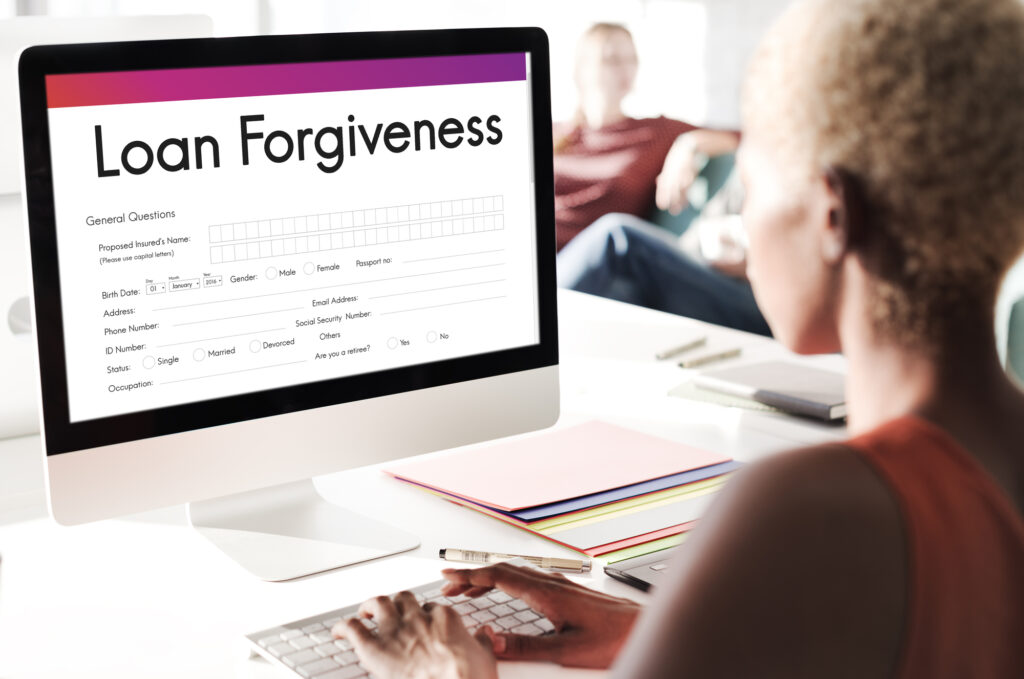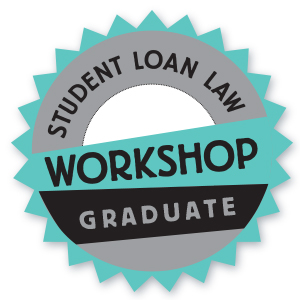Time is running out. If you have a loan through the FFEL Program and want student loan forgiveness, act now! The deadline for the FFEL waiver is December, and since this is a government program, there is a lot of paperwork needed for you to get into a realistic repayment plan. In this guide, we’ll discuss the following:
- What is the Federal Family Education Loan Program (FFELP)?
- How can I tell if I have a Federal Family Education Loan (FFEL)?
- What should I consider before FFEL consolidation?
- What are the benefits of FFEL consolidation? (Hint: Possible student loan forgiveness!)
- What is a Student Loan Lawyer?
- How can a Student Loan Lawyer help me?
What is an FFEL?
FFEL stands for the Federal Family Education Loan Program. Created by the U.S. government, it provided low-interest loans to students and parents to help pay for education expenses. New loans have not been issued since the government discontinued the program in 2010.
Under the FFEL program, private lenders such as banks and credit unions were authorized to provide student loans that the federal government guaranteed. These loans included Stafford loans, PLUS loans for parents, and consolidation loans. Since the loans were guaranteed, the government would pay the lender back if the borrower defaulted on their payments.
The Direct Loan program, administered directly by the U.S. Department of Education, replaced FFELP. Under the Direct Loan program, the government provides loans directly to students and parents without involving private lenders.
What types of loans fall under the Federal Family Education Loan (FFEL) Program?
The Federal Family Education Loan (FFEL) program included several types of loans to help students and their families finance their education. The types of loans that fall under the FFEL program were:
- Stafford loans – Low-interest loans available to undergraduate and graduate students were either subsidized or unsubsidized. Subsidized Stafford loans were awarded based on financial need, and the government paid the interest while the student was in school. Unsubsidized Stafford loans were available to all students, but the interest accrued while the student was in school.
- PLUS loans – Available to parents of dependent undergraduate students and to graduate or professional students. The federal government also guaranteed PLUS loans through private lenders.
- Consolidation loans – Allowed borrowers to combine multiple federal student loans into one loan. Consolidation loans had a fixed interest rate, and the borrower could extend the repayment period, which lowered their monthly payments.
These loans were all issued by private lenders but guaranteed by the federal government. All new federal student loans are now issued directly by the U.S. Department of Education through the Direct Loan program.
How to Identify if you have an FFEL?
Since private lenders issued FFEL loans, not all students with federal student loans have an FFEL loan. However, if you borrowed money for college between 1965 and 2010, you might have at least one FFEL loan.
There are multiple ways to identify whether your loan is an FFEL:
Log in to the National Student Loan Data System (NSLDS)
Go to https://nsldsfap.ed.gov/login using your Federal Student Aid (FSA) ID.
On the NSLDS homepage, you will see a list of all your federal student loans. If you have an FFEL loan, it will be listed as a Federal Family Education Loan in the loan type column.
Contact Your Loan Servicer
If you cannot access NSLDS, contact your loan servicer to ask if you have an FFEL loan. You can also check your loan documentation to see if it mentions the FFEL program or lists it as an FFEL loan.
Call the Federal Student Aid Information Center
If you are unsure whether you have an FFEL, contact the Federal Student Aid Information Center at 1-800-433-3243 for assistance. They can help you determine your loan type and provide guidance on how to manage your loan repayment.
Should I consolidate my FFEL?
Whether or not to consolidate an FFEL loan depends on your financial situation and goals. Here are some factors to consider:
FFEL Interest Rate
When you consolidate your FFEL, the new loan will have a fixed interest rate which is the weighted average of the interest rates on your existing loans. If the interest rate on your new consolidated loan is lower than the average rate of your current FFEL, you could save money over the life of the loan. However, if your existing FFEL loans have a low-interest rate, consolidating them may not be beneficial.
Monthly FFEL Payment
Consolidating your FFELs can help you simplify your repayment by combining multiple loans into one payment. You can also extend your repayment term, lowering your monthly payment. Keep in mind that a longer repayment term means that you will pay more interest over the life of the loan.
Student Loan Forgiveness
If you work in a public service job or for a non-profit organization, you may be eligible for loan forgiveness after making a certain number of payments. If you consolidate your FFELs, you may lose eligibility for certain student loan forgiveness programs.
Other FFEL benefits
Your FFEL may offer some benefits, such as interest rate reductions for automatic payments and a grace period, that you may lose if you consolidate your loans.
In summary, consolidating your FFEL loans could be a good idea if it lowers your interest rate or makes your monthly payment more manageable. Before you consolidate, make sure you understand the potential benefits and drawbacks and how they will impact your specific financial situation. It’s a good idea to consult with a financial advisor or an experienced student loan lawyer to help you make the best decision for your unique situation.
Is an FFEL Eligible for Student Loan Forgiveness?
FFEL loans are generally not eligible for student loan forgiveness programs. However, a few exceptions exist where FFEL loans may qualify for forgiveness under certain circumstances. Here are some examples:
Public Service Loan Forgiveness (PSLF)
If you have an FFEL loan and work in a public service job, you may be eligible for student loan forgiveness under the PSLF program. To qualify, you must make 120 qualifying payments while working full-time for a qualifying employer. However, to be eligible for PSLF, you must consolidate your FFEL loans into a Direct Consolidation Loan, which will then be eligible for forgiveness under the program.

Teacher Loan Forgiveness
If you are a teacher with an FFEL, you might be eligible for student loan forgiveness under the Teacher Loan Forgiveness program. You must teach full-time at a low-income school or educational service agency for five consecutive years to qualify. The amount of student loan forgiveness varies depending on the type of loan and the number of years you teach.
Disability Discharge
If you have an FFEL and become permanently disabled, you may be eligible for a loan discharge under the Total and Permanent Disability (TPD) Discharge program. To qualify, you must provide documentation from a physician stating that you are unable to work and earn money because of physical or mental impairment.
***NOTE: FFEL loans are generally not eligible for loan forgiveness programs like the Income-Driven Repayment (IDR) plans or the Borrower Defense to Repayment program. However, if you consolidate your FFEL loans into a Direct Consolidation Loan, you may be eligible for some of these programs.***
What is the Difference Between a Direct Consolidation Loan and a FFELP Consolidation Loan?
Direct Consolidation Loans and FFELP Consolidation Loans are federal loan consolidation programs that allow borrowers to combine multiple federal student loans into one loan. However, there are some differences between the two types of loans.
The U.S. Department of Education issues Direct Consolidation Loans under the William D. Ford Federal Direct Loan Program. These loans can only be used to consolidate federal student loans that are also under the Direct Loan Program. This includes:
- Direct Subsidized Loans
- Direct Unsubsidized Loans
- Direct PLUS Loans
- Direct Consolidation Loans
Loans in this program have a fixed interest rate that is based on the weighted average of the interest rates of the loans being consolidated. Borrowers can choose from various repayment plans and may be eligible for student loan forgiveness programs.
In contrast, FFELP Consolidation Loans were issued by private lenders under the Federal Family Education Loan Program (FFELP). This program is no longer available, but borrowers who took out FFELP loans before July 1, 2010, may still be eligible to consolidate their loans under this program. FFELP Consolidation Loans can consolidate FFELP loans, Direct Loans, and Federal Perkins Loans. The interest rate on an FFELP Consolidation Loan is also fixed and is based on the weighted average of the interest rates of the loans being consolidated. Borrowers may have a limited range of repayment plans available to them.
To summarize: Both Direct Consolidation Loans and FFELP Consolidation Loans allow borrowers to consolidate their federal student loans. The primary differences are who issues the loan, which loans can be consolidated, and the range of repayment plans available.
Should I Consolidate My FFEL into a Direct Consolidation Loan?
Consolidating your student loans can be beneficial in several ways. Here are some reasons why you might consider consolidating your student loans:
Simplify Student Loan Payments
If you have multiple federal student loans with different servicers, consolidating them into a single loan can simplify your repayment by combining them into one monthly payment. This can make it easier to keep track of your payments and reduce the chances of missing a payment.
Lower Your Monthly Student Loan Payment
If you struggle to make your monthly loan payments, consolidating your student loans can help you lower your monthly payment by extending your repayment term. This can make your payments more manageable, but keep in mind that you may pay more in interest over the life of the loan if you extend the repayment term.
Lock in a Fixed Interest Rate on Your Student Loans
If you have variable interest rate loans, you can consolidate them into a fixed interest rate loan. This can provide stability and protect you from interest rate increases.
Access to Different Student Loan Repayment Plans
Consolidating your loans can also give you access to different repayment plans that may not be available for your current loans. For example, if you consolidate into a Direct Consolidation Loan, you may be eligible for Income-Driven Repayment plans, which can lower your monthly payment based on your income. This could also enable you to work toward student loan forgiveness.
Potentially Save Money
Generally speaking, consolidating loans saves money over the life of the loan if you can get a lower interest rate than your current loans. However, remember that this will depend on your particular financial situation and the terms of your new consolidated loan.
Before consolidating your student loans, it’s essential to carefully consider the pros and cons and understand the terms and conditions of the new loan. Make sure you know how consolidation impacts your interest rate, monthly payment, and overall repayment term. Speaking with a financial advisor or student loan expert is a good idea to help you make the best decision for your circumstances.
How Do I Consolidate an FFEL Loan into a Direct Loan?
You must apply for a Direct Consolidation Loan to consolidate an FFEL (Federal Family Education Loan) into a Direct Loan. Here are the steps you can follow:
- Go to the Federal Student Aid(https://studentaid.gov) website and log in using your FSA ID.
- Once logged in, click the “Consolidate Loans” option and select “Complete a Direct Consolidation Loan Application and Promissory Note.”
- Follow the instructions and enter all the required information, including information about the loans you wish to consolidate.
- Review the terms and conditions of the consolidation loan, including the interest rate, repayment options, and any student loan forgiveness programs you may be eligible for.
- Sign and submit your application.
Once your application is processed and approved, your FFEL loans will be paid off, and a new Direct Consolidation Loan will be created. You will then have a single monthly payment to make on your new loan.
Although the process seems straightforward, it is important to note that when you consolidate your FFEL loans into a Direct Consolidation Loan, you may lose certain benefits, such as interest rate discounts or principal rebates, associated with your FFEL loans. Therefore, it is essential to carefully consider the pros and cons of consolidation before proceeding. A skilled student loan lawyer can help you understand the effects consolidation will have on your student loan debt.
Update as of January 30, 2024
If your loan was not forgiven in 2023, don’t worry. The government plans to review accounts 20 to 25 years old, as frequently as every two months, in 2024. The goal is to ensure borrowers get student loan forgiveness as soon as they are eligible. If you haven’t done it yet, enroll in an IDR plan before the end of April 2024 to take advantage of the recount and continue to build credit towards IDR forgiveness. Payments you make after the account adjustment won’t count toward forgiveness if you don’t enroll.
What is a Student Loan Lawyer?
A student loan lawyer is a legal professional who specializes in helping borrowers with student loan-related issues. These lawyers can provide legal advice and representation on a wide range of student loan matters, including:
- Loan consolidation
- Loan forgiveness
- Loan repayment plans
- Loan default
- Loan discharge
Student loan lawyers can assist you in understanding your rights and options under federal and state laws related to student loans, as well as any relevant regulations and policies. They can help you navigate the often-complex student loan system, including dealing with loan servicers, lenders, and other entities involved in the loan process.
Some common services provided by student loan lawyers include:
- Helping borrowers understand their loan terms and repayment options
- Assisting with loan consolidation, refinancing, and student loan forgiveness applications
- Representing borrowers in legal disputes with lenders or loan servicers
- Advocating for borrowers’ rights and interests in bankruptcy court
- Providing guidance and advice on loan rehabilitation and default resolution strategies
When looking for an attorney, choose a reputable and experienced lawyer with specific student loan law training and a track record of success helping borrowers with student loan-related issues.
Learn more about how a student loan law professional can help you.
Student loan lawyers with the training and expertise to help you with student loan issues display this seal on their website.
Can a Student Loan Lawyer Help Me with My Student Loan Debt?
If you are struggling with your student loans and are considering consolidation, a student loan lawyer may help you understand your options, evaluate your eligibility for student loan forgiveness programs, negotiate with lenders, or provide legal representation in a dispute or lawsuit.
Borrowers can typically handle student loan consolidation through the Department of Education’s Direct Consolidation Loan program. However, a student loan lawyer can guide and assist with the loan consolidation process and ensure you have all the information you need to make the best decision for your budget and circumstances.
It’s essential to do your research and choose a reputable and experienced student loan lawyer specializing in this law area. You can check with your state’s bar association or other legal referral services to find a qualified student loan lawyer in your area.

